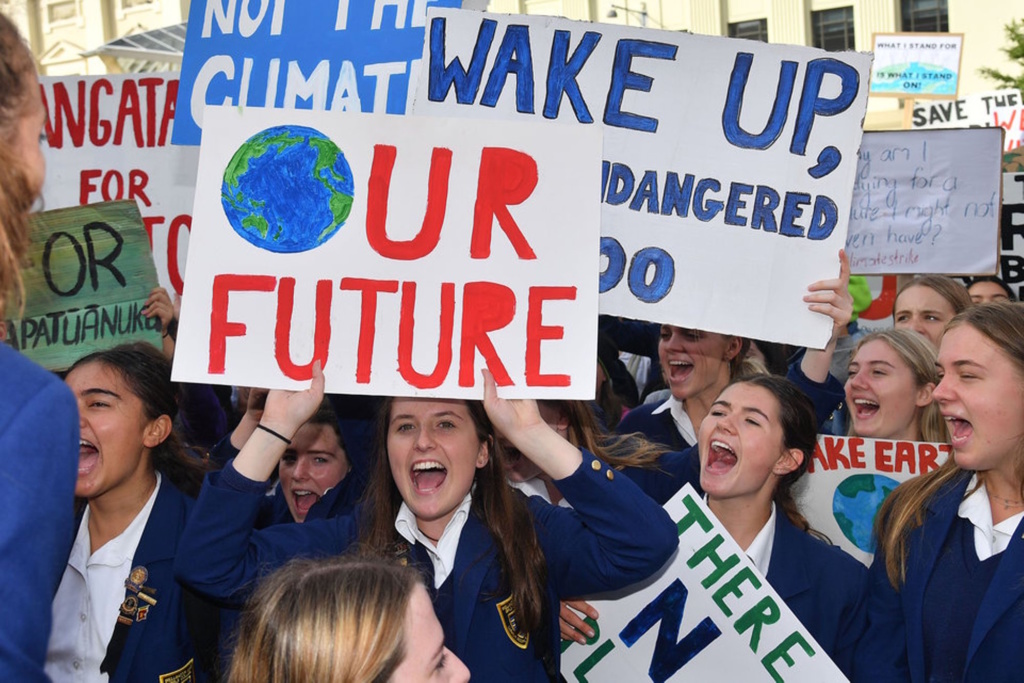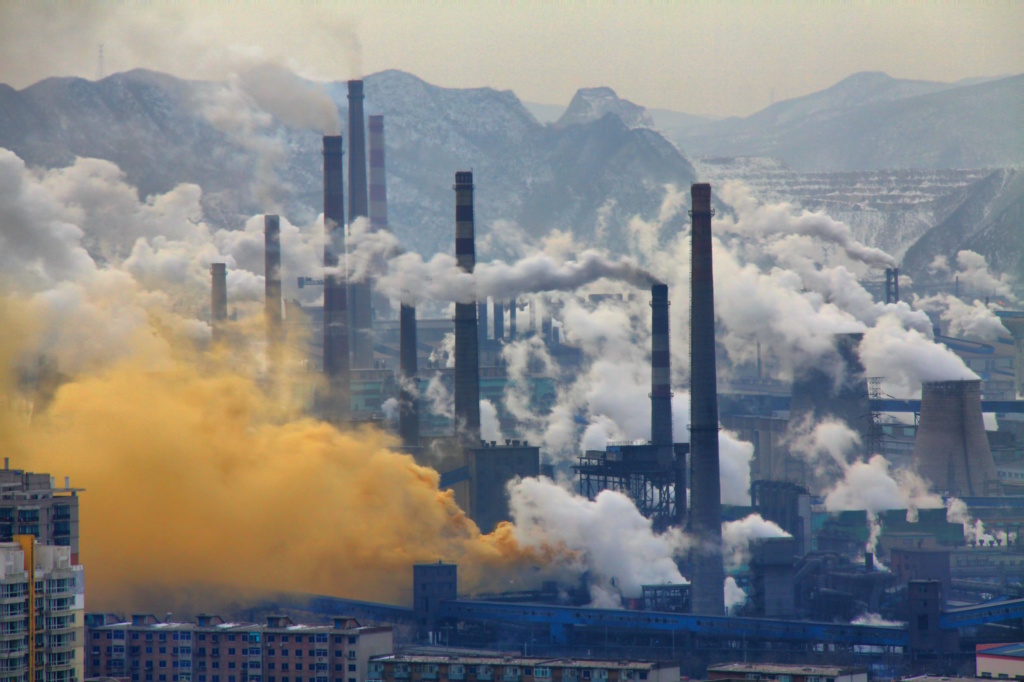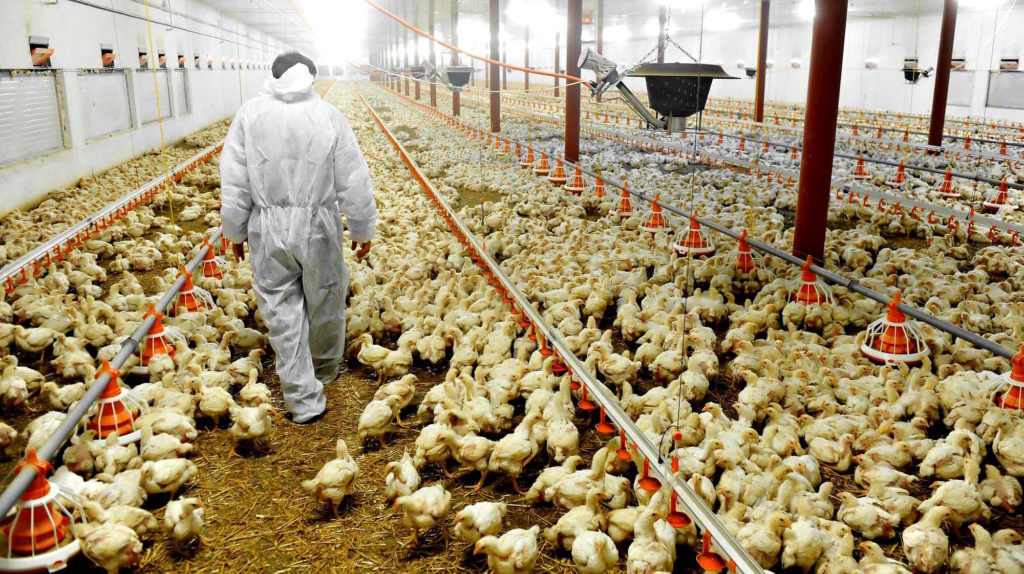
Scientists agree that the Earth is risking a major ecological breakdown that could eventually render it largely uninhabitable. Global populations of fish, birds, mammals, amphibians and reptiles declined by 58% between 1970 and 2012. From 20-30% of known species now appear at risk of extinction.
Human beings have existed for just 200,000 years, yet our impact on the planet is so great that scientists around the world are calling our period in the Earth’s history the ‘Anthropocene’ – the age of humans. Species are becoming extinct 100 times faster than they would without human impacts.
The decline of global biodiversity because of human action is setting us on a path to catastrophe. We have to protect nature and reverse its decline. The survival of nature is also the survival of human well-being. Unless we can reverse this decline, we are creating a bleak future for our children and future generations.
It is therefore important for our children and young people to understand that the fate of human beings is completely bound up with the other creatures, plants and organisms that we share the planet with. They provide the clean air and water, the food, the nutrient recycling, the de-toxing, the medications, the clothing and the timber that we need for survival. We need our young people to gain this knowledge through Ecological Understanding.
The Sixth Extinction
Scientists have warned that Earth is on the brink of a ‘sixth extinction’. In the past 540 million years each of the ‘Big Five’ extinctions wiped out three-quarters or more of all animal species. Previous extinctions occurred through naturally-induced events. The sixth extinction is being caused by us. The global authority on the state of the natural world, the International Union for Conservation of Nature (IUCN) has a Red List of biodiversity and it puts more and more species on the ‘critically endangered’ and ‘currently threatened’ lists.
Previous mass extinctions unfolded over hundreds of thousands to millions of years, inflicted in the main by naturally-caused global warming or cooling. The most abrupt and famous extinction happened 66 million years ago when an asteroid hit the earth and caused giant firestorms whose dust cooled the planet and wiped out the dinosaurs and 76% of all species.

The sixth extinction is human-made and inextricably linked to the burning of fossil fuels. The world is currently burning enough fossil fuels to raise the Earth’s temperature by 4-5 degrees Celsius by 2100 – an event that the majority of large wild animals, and most humans cannot survive. Add to this deforestation, habitat destruction, pollution, over-fishing, global trade and over-consumption of the world’s resources it is clear that it is our way of life that is responsible for this tragedy.
Here is a short video to explain The Sixth Extinction. 2.56 mins.
Covid-19 And Ecological Breakdown
The recent Covid-19 pandemic is intrinsically linked to ecological breakdown. The virus is believed to have been initially hosted by bats and transmitted to humans via another wild animal for sale at a wet market in Wuhan, China. Genetic analyses suggest that this wild animal might be a pangolin, an endangered but highly trafficked mammal.
In fact, three out of four new or emerging infectious diseases in the last 30-40 years has come about as a result of our destruction of nature. Known as zoonotic diseases they are infectious diseases that originate in wild-life. This is not new. The plague crossed to humans from rats. Spanish flu originated in birds. HIV was probably transferred to humans from butchered chimpanzees. Ebola in West Africa has been linked to hunting and butchering of wild animals, including bats. Lyme disease is carried to humans by ticks and this is spreading across the world as shrinking habitats cannot sustain predators that would reduce the animal reservoir of Lyme bacteria. And with present rates of destruction of habitats things can only get worse. At the same time, long dormant bacteria and viruses trapped in ice and permafrost are reviving as the climate warms.
The Covid-19 pandemic has affected us all. What is less well known is its relationship to how we treat the natural world and the impact of ecological breakdown on viruses. This is a further reason for schools to ensure its pupils have a good understanding of ecology to better understand ecological breakdown.
Our Relationship With Animals
To summarise, nature is declining globally at rates unprecedented in human history and the rate of species extinction is accelerating. All around the world our treatment of animals is a cause for concern. Over the course of human history, we have caused the loss of 83% of all wild animals. Habitat loss poses the greatest threat to species today. The world’s forests, swamps, plains, lakes and other habitats disappear as they are cleared to make way for agriculture and industrial development. Tropical forests contain at least half of all the Earth’s species and each year they are being felled at alarming rates with the corresponding loss of animals.
Not only are we responsible for the decline in wild animals, we have also populated the world with farm animals. Today of all the mammals in the world, 60% are livestock, 36% are humans and only 4% are wild. Similarly, only 30% of birds are wild, the rest (70%) are farmed poultry.
We know that animal farming is responsible for at least 18% of the world’s climate changing gases. What is less well known is the health risks associated with intensive animal farming, for example, salmonellosis, avian flu, swine flu, bovine spongiform encephalopathy and foot-and-mouth disease. These diseases are part and parcel of the ecological breakdown crisis.

Factory farming of animals in particular is a cause for concern. Industrial methods of farming using antibiotics to promote growth and prevent disease in animals and fish means much antimicrobial waste is released into the environment through water courses. The NHS is concerned that agricultural antibiotic use is driving up levels of antibiotic resistance leading to new ‘superbugs’. Clear links have been established between antibiotic use in food production and resistance in humans.
The extent to which we are causing the shrinking, deteriorating or vanishing of ecosystems is frightening and is a direct threat to biodiversity and human well-being. In this issue we pick up some of the links between climate change and biodiversity.
What Can We Do About It?
The good news is we have the technologies and capacity to change direction and prevent this catastrophe. In schools our job is to promote a holistic understanding of the visible connections between human, other animals and the biodiversity of the Earth so students can understand what is happening, why and what we can do about it.
The Planning Tool is deigned to help us foster a sense of awe and wonder for the natural world and use the arts to express this through Aesthetic Understanding. Closely related to this is understanding of the world’s ecosystems and how they work through Ecological Understanding. Once children feel connected to nature and wildlife and have some understanding of ecosystems they can address the three core questions: ‘What is Happening?’ ‘Why is it happening?’ and ‘What can we do about it?’ .
A theme running through this issue is our relationship with animals and the natural world. It is important that the Foundation Phase and Key Stage 1 have the chance to gain direct experience of looking after animals and in that process develop an understanding of their life cycles. Whether it is a guinea-pig, a stick insect or chickens in the garden, proximity to animals and concern for their well-being is a vital experience for young children.
The Activities
In the first activity, OK/Not OK, young children are asked to consider how humans use animals for work. Considering the lives of some of the sentient beings that share this planet with us and our relationship with them is an important moral issue that helps children to think about what we owe ethically to other animals.
Children in Lower KS2 are invited to visit a woodland, to experience this ecosystem through their senses to help them feel a part of not apart from the natural world. A woodland or even some trees in a park or the school grounds can help children understand the inter relatedness and interdependence of all living things on the planet. In a follow-up activity they gain Ecological Understanding of a broadleaved forest as they learn about the relationship between the sun, the soil, green plants, bacteria, fungi, insects, invertebrates, birds and mammals and see how all are connected in the woodland ecosystem.
Teachers of Upper KS2 are introduced to the topic of Plastics in the Ocean and its impact on ecosystems and animals. Key information about what is happening and why is it happening is included with activities to promote Aesthetic Understanding and to explore What we can do about it. We also refer you to a previous edition of CTL, Vol.2.2, P. 56-71 where you will find a range of activities to support children’s Ecological Understanding of Ocean Environments. We are also preparing guidelines for carrying out a field study of a beach which will be on the website.
In the Council of All Beings we give children and young people the opportunity to foster compassion for all living beings on the planet and develop awareness of the difficulties and dangers they face. Beginning with a story –‘The Lorax’, the activity is excellent for growing Ecological Understanding as it brings a sense of solidarity with all life and awareness of the damage caused by our own human species and through making masks, they develop Aesthetic Understanding.
Continuing our theme related to ecological breakdown KS3 are given a mystery to solve regarding our production and consumption of intensively reared animals and ask: Should we change our animal rearing and/or meat-eating habits?
The second part of Dragon’s Den considers how we use the land and suggests three more solutions to climate change and ecological breakdown.
Finally, KS4 consider who should take responsibility for carbon emissions – the consumer or producer? Teachers should bring holistic thinking to this activity and remind students of the processes of resource extraction necessary for the production of our everyday goods. Digging minerals, metals and hydrocarbons from the ground disrupts the landscape. Extraction brings roads, power transmission and facilities for workers and waste disposal from the mining and other human activities. Such operations often use hazardous chemicals that enter our ecosystems and contaminate water, land and air, impacting on animals in the food chain and whole ecosystems. It is a ‘take, make, throw away’ model of production. Who should pay for the damage caused? Instead we need a circular, regenerative economy aimed at getting rid of waste and continual use of resources.
As teachers we have a duty to our pupils and to future generations to ensure that this generation gain understanding of biodiversity and knowledge of the impact of biodiversity loss on planet and people. We must all be on a journey together to become stewards of the natural world. Our future survival depends on it.
Register for free
No Credit Card required
- Register for free
- Free TeachingTimes Report every month